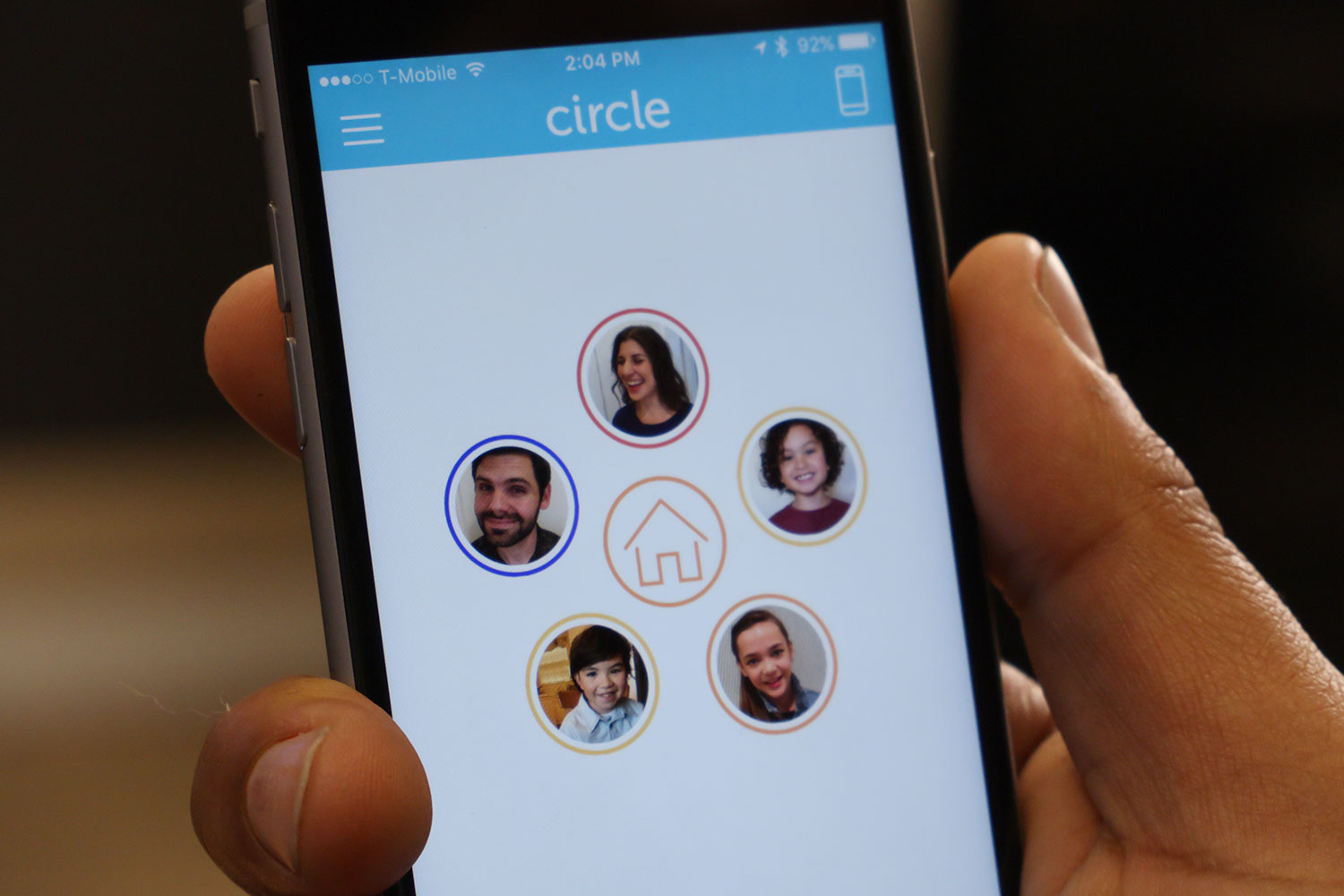Indeed, today’s Internet control and monitoring solutions are largely ineffective. Why? They’re device-based. They live on individual phones, tablets and computers, and only affect that one device. That’s why Jelani Memory, Lance Charlish and Tiebing Zhang created Circle, a little white box that gives a family control of their home’s Internet connection, and the content that flows through it, for any device. It’s a great idea — so great, in fact, that when Disney caught wind of it, the famously family-friendly company wanted to partner up. Now, the device is called Circle with Disney.
The new sheriff in town
On the outside, Circle is an unassuming, Apple-white box with a face reminiscent of the iconic iPod. But inside, Circle is an Internet gatekeeper with the brains to control which devices can connect to the Internet, when they can connect, which apps and websites can be used, and how long those apps or websites can be used. It can block ads, pause and restart the Internet at the touch of a button, and let its user(s) access historical data about what kind of content devices have accessed, and when. If the Internet is the wild, wild, West, then Circle is the new sheriff in town. Only you control the sheriff, and you do it with a dead-simple mobile app.
How Circle works
Circle with Disney is not a router, so you don’t have to replace any equipment to use it. You simply add Circle to your Internet connection by giving it access to your router. This can be done by either connecting it to a router with an Ethernet cable, or by connecting wirelessly. Once Circle is connected, it has complete reign over anything connected to your Internet connection, and that’s when you can start establishing some rules — or, you know, at least some guidelines.
One App to rule them all
If ever there was a more apropos use of this beat-to-death reference to The Lord of the Rings, we’ve yet to see it. The Circle with Disney app (free at the iTunes app store) is the interface through which access to the Internet is granted or denied. It controls Circle, which controls everything else. And the good news is, it is dead simple to use.
The good news is, Circle is dead simple to use.
Now might be a good time for us to point out that Circle recognizes devices, not users — that’s because Circle affords control without having to install software on any device. So, if 16-year old Jacob is limited to two hours of YouTube time per day and burns through his allotment, he could potentially pick up Sally’s iPad and start burning up her allotted time. The system isn’t perfect.
Still, Circle has the ability to attribute certain devices to certain people in the home. Say Jacob has an iPad, an iPhone and an Xbox One he likes to use to access Facebook: All three devices can be added to Jacob’s profile, and any limit placed on Facebook access — let’s say Jacob gets three hours max per day — will be enforced across those devices. It doesn’t matter whether Jacob uses
Circle can also manage when certain devices can or can’t access the Internet. For example, bedtimes can be assigned to specific devices, or all of the devices under a user’s profile. Or, devices can be denied access for periods throughout the day … say, homework time.
Circle with Disney is positioned as a tool for parents, but it can be useful for anyone who wants to keep tabs on what’s going on with their Internet connection without having to log into their router and deal with its horrendous user interface. Circle can tell you if anyone is “borrowing” your Internet connection and let you put an immediate stop to it, track down the bandwidth hog causing your Netflix binge session to buffer, or simply clue you in to how much time you spend streaming YouTube video, all through an easy-to-use smartphone or tablet app.
If you want to see more about how Circle works in practice, be sure to check out our video above.
How does Disney fit in?
Jelani Memory, founder of Circle Media, told Digital Trends in an interview that Disney was the perfect partner to help he and his co-creators see the Circle device make it to market. Not only did Disney offer its help in finessing and distributing the product, but it has become a content partner of sorts as well. Now, Circle with Disney will offer a curated selection of Disney videos, music, games, blogs, and more through a feature called MyCircle. This content is made available whenever someone is cut off from access. For instance, if Sally burns through her allotted time playing Minecraft, she’ll be offered several pages of Disney content to watch instead. Not big on Disney? Well, you can ignore it. After all, the Circle is still a pretty outstanding device without the “with Disney” part.
Ummm, Privacy?
Naturally, privacy is a big concern here. At a fundamental level, Circle is monitoring Internet traffic, and if a big company like Disney is involved, maybe they want to harvest data to learn about your family’s viewing and shopping habits so they can better market to you. After all, the device can block ads; could it then also insert ads it would rather you see? Technically, yes, it could. But that’s not going to happen.
Memory tells us, unequivocally, that neither Disney, nor Circle Media, has access to that what little data is stored on the device. “We’re not mining that data, we’re not selling that data, and Disney has absolutely zero access to that data,” said Memory. “A philosophy with our company is … we don’t even want to have access to that data. All that data still lives on the Circle device, and never actually leaves the home other than to be routed to the app, and it’s all metadata at that point.”
It’s about time … literally
If you don’t let your kids watch any kind of TV they want, anytime they want, chances are you don’t want them having carte blanche Internet access. Circle with Disney offers the granular content and access control we think many parents have been looking for since smartphones, tablets, and computers started replacing the television as the go-to entertainment device in the home. At $99, it’s small investment for a tool that can put’s access to the Internet firmly in the hands of the head of the family, and put some limits on something that might better be considered a privilege, rather than a right.
You can purchase Circle with Disney now from meetcircle.com, and the device will be available soon from DisneyStore.com/circle. The free Circle app can be downloaded now at the Apple App Store. And for a more hands-on look at Circle with Disney, be sure to check out our video up above.






















